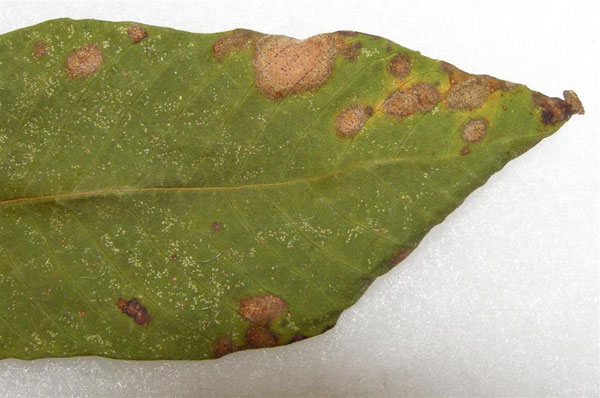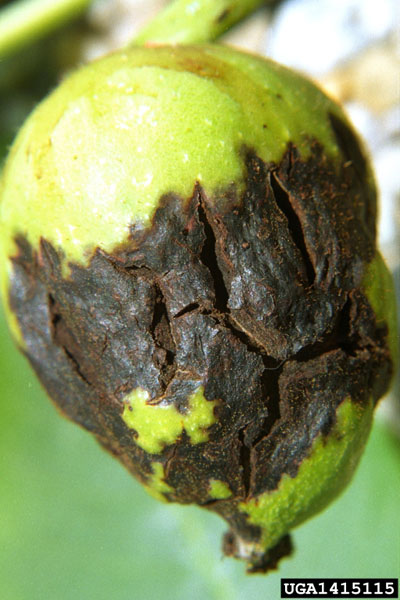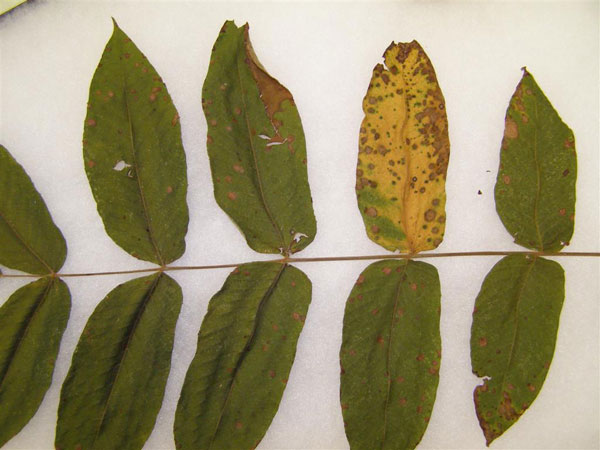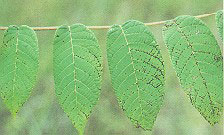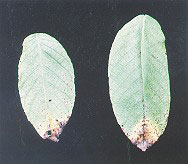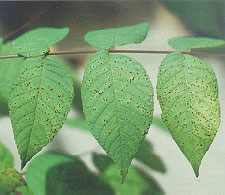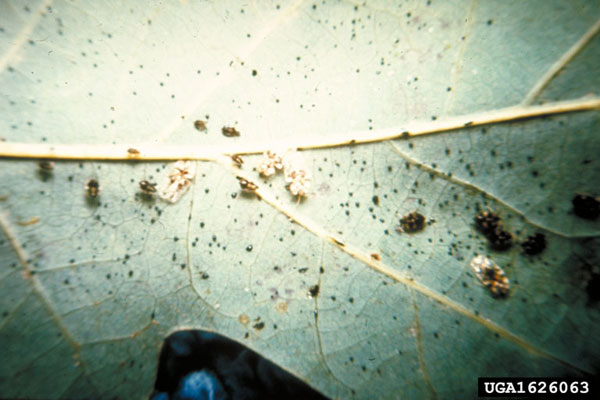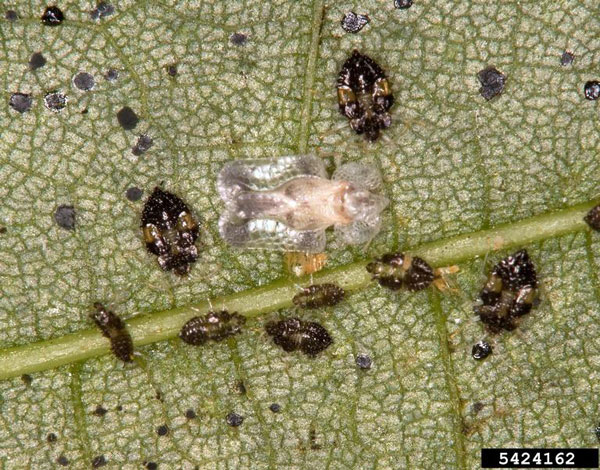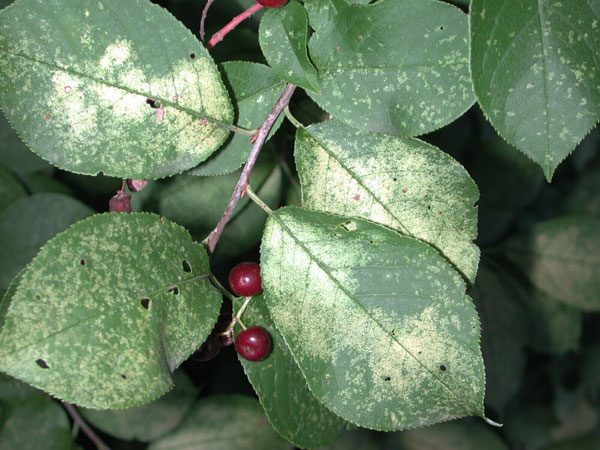How does anthracnose survive and spread?
Anthracnose fungi survive winter in buds, twigs, fruit, fallen leaves or petioles (the stem that joins a leaf to a branch) depending on which types of trees and fungi are involved. In spring, spores are splashed short distances by water or carried long distances by wind to newly forming leaves. If weather conditions remain cool and wet, spores will form within the leaf spots and spread throughout the tree canopy. These spores will form new leaf spots. This cycle continues as long as cool, wet weather is present. Once the weather becomes dry and the leaves mature, spread of the disease will end and the tree will replace lost leaves with new growth.
For ash, maple and oak trees, young leaves and shoots are most likely to be infected. Mature, fully expanded leaves are largely resistant and only become infected through minor wounds like damage from insect pests.
Anthracnose can continue to progress through summer months on trees like walnut and hornbeam. Anthracnose can occasionally occur on any tree in the summer if cool, wet weather occurs when the tree is producing a new flush of young leaves.
How to Manage Anthracnose
Tolerate Anthracnose
In most cases, anthracnose does not cause permanent damage to established trees. Leaf spotting and leaf distortion have very little effect on the health of the tree. No action needs to be taken to help the tree recover from this minor stress.
Keep your shade trees healthy
- Reduce stresses on trees by adequate watering throughout the growing season.
- Wet conditions promote disease so redirect sprinklers that splash water on the tree’s leaves.
- Do not fertilize trees unless a soil test shows the need for it.
- Rake up and destroy fallen leaves before the first snowfall. This will get rid of locations where the fungus can survive to re-infect the tree the following spring.
- Prune to remove infected twigs, increase light penetration and improve air circulation throughout the tree canopy.
When are fungicides necessary?
Fungicides are not necessary unless a tree has lost most or all of its leaves several years in a row because of anthracnose. Fungicides are protective and need to be applied before symptoms appear on the leaves. Proper timing of fungicide applications can vary widely from growing season to growing season and can be difficult to predict.
For large trees, high-pressure spraying equipment is needed to get complete coverage.
Hire a professional arborist who can safely operate all necessary equipment.
Chemical treatments include products with the following active ingredients:
- Propiconazole
- Thiophanate methyl
- Copper containing fungicides
- Mancozeb
- Chlorothalonil
CAUTION: Mention of a pesticide or use of a pesticide label is for educational purposes only. Always follow the pesticide label directions attached to the pesticide container you are using. Remember, the label is the law.
Information source: University of Minnesota Extension

